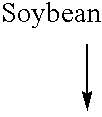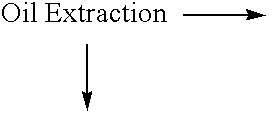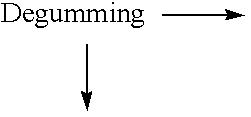Delta 15 desaturases suitable for altering levels of polyunsaturated fatty acids in oleaginous plants and yeast
a technology of polyunsaturated fatty acids and desaturases, applied in the field of biotechnology, can solve the problems of uncontrollable fluctuations in availability of natural sources, high heterogeneous oil composition of natural sources such as fish and plants, and crops producing pufas are often not competitive economically with hybrid crops developed, and achieve the effect of increasing the ratio of omega-3 fatty acids
- Summary
- Abstract
- Description
- Claims
- Application Information
AI Technical Summary
Benefits of technology
Problems solved by technology
Method used
Image
Examples
example 1
Construction of Yarrowia Expression Vectors
[0428] The present Example describes the construction of pY5-13 (comprising a chimeric TEF promoter:XPR terminator gene), pY5-13GPDN (comprising a chimeric GPD promoter:XPR terminator gene), and pY5-20 (comprising a chimeric hygromycin resistance gene).
Construction of Plasmid pY5-13
[0429] The plasmid pY5, a derivative of pINA532 (a gift from Dr. Claude Gaillardin, Insitut National Agronomics, Centre de biotechnologie Agro-Industrielle, laboratoire de Genetique Moleculaire et Cellularie INRA-CNRS, F-78850 Thiverval-Grignon, France), was constructed for expression of heterologous genes in Yarrowia lipolytica (FIG. 3). First, the the partially-digested 3598 bp EcoRI fragment containing the ARS18 sequence and LEU2 gene of pINA532 was subcloned into the EcoRI site of pBluescript (Strategene, San Diego, Calif.) to generate pY2. The TEF promoter (Muller S., et al., Yeast, 14: 12671283 (1998)) was amplified from Yarrowia lipolytica genomic DNA ...
example 2
Cloning of the Yarrowia Lipolytica Δ12 Desaturase and Disruption of the Endogenous Δ12 Desaturase Gene
[0443] Based on the fatty acid composition of Yarrowia lipolytica (ATCC #76982) which demonstrated that the organism could make LA (18:2) but not ALA (18:3), it was assumed that Y. lipolytica would likely contain gene(s) having Δ12 desaturase activity but not Δ15 desaturase activity. Thus, the present Example describes the use of degenerate PCR primers to isolate a partial coding sequence of the Yarrowia lipolytica Δ12 desaturase, the use of the partial sequence to disrupt the native gene in Yarrowia lipolytica, and subsequent cloning of the full-length gene.
Cloning of a Partial Putative Δ12 Desaturase Sequence from Yarrowia lipolytica by PCR Using Degenerate PCR Primers
[0444] Genomic DNA was isolated from Yarrowia lipolytica (ATCC #76982) using DNeasy Tissue Kit (Qiagen, Catalog #69504) and resuspended in kit buffer AE at a DNA concentration of 0.5 μg / μl. PCR amplifications wer...
example 3
Identification of Δ15 Desaturases from Filamentous Fungi
[0460] The present Example describes the identification of Δ15 desaturases in various filamentous fungi. These sequences were identified based on their homology to the Yarrowia lipolytica Δ12 desaturase (Example 2); and, the sequences from each species fell into one of two “sub-families” based on phylogenetic analyses.
Homology Searches With Synechochytis Δ15 Desaturase
[0461] First, public databases of the filamentous fungi Neurospora crassa and Magnaporthe grisea sequences were subjected to BLAST searches (Basic Local Alignment Search Tool; Altschul, S. F., et al., J. Mol. Biol. 215:403-410 (1993)) using the Synechochytis Δ15 desaturase protein sequence (gene desB; GenBank Accession No. D90913) as the query sequence. Unexpectedly, these searches failed to identify any homologous sequence.
Homology Searches With Yarrowia lipolytica Δ12 Desaturase
[0462] Applicants then performed BLAST searches of the same databases with the...
PUM
| Property | Measurement | Unit |
|---|---|---|
| Temperature | aaaaa | aaaaa |
| Fraction | aaaaa | aaaaa |
| Fraction | aaaaa | aaaaa |
Abstract
Description
Claims
Application Information
 Login to View More
Login to View More - R&D
- Intellectual Property
- Life Sciences
- Materials
- Tech Scout
- Unparalleled Data Quality
- Higher Quality Content
- 60% Fewer Hallucinations
Browse by: Latest US Patents, China's latest patents, Technical Efficacy Thesaurus, Application Domain, Technology Topic, Popular Technical Reports.
© 2025 PatSnap. All rights reserved.Legal|Privacy policy|Modern Slavery Act Transparency Statement|Sitemap|About US| Contact US: help@patsnap.com



